Home>Articles>How to Deal With Loud Fan Noise When the Car AC Is On
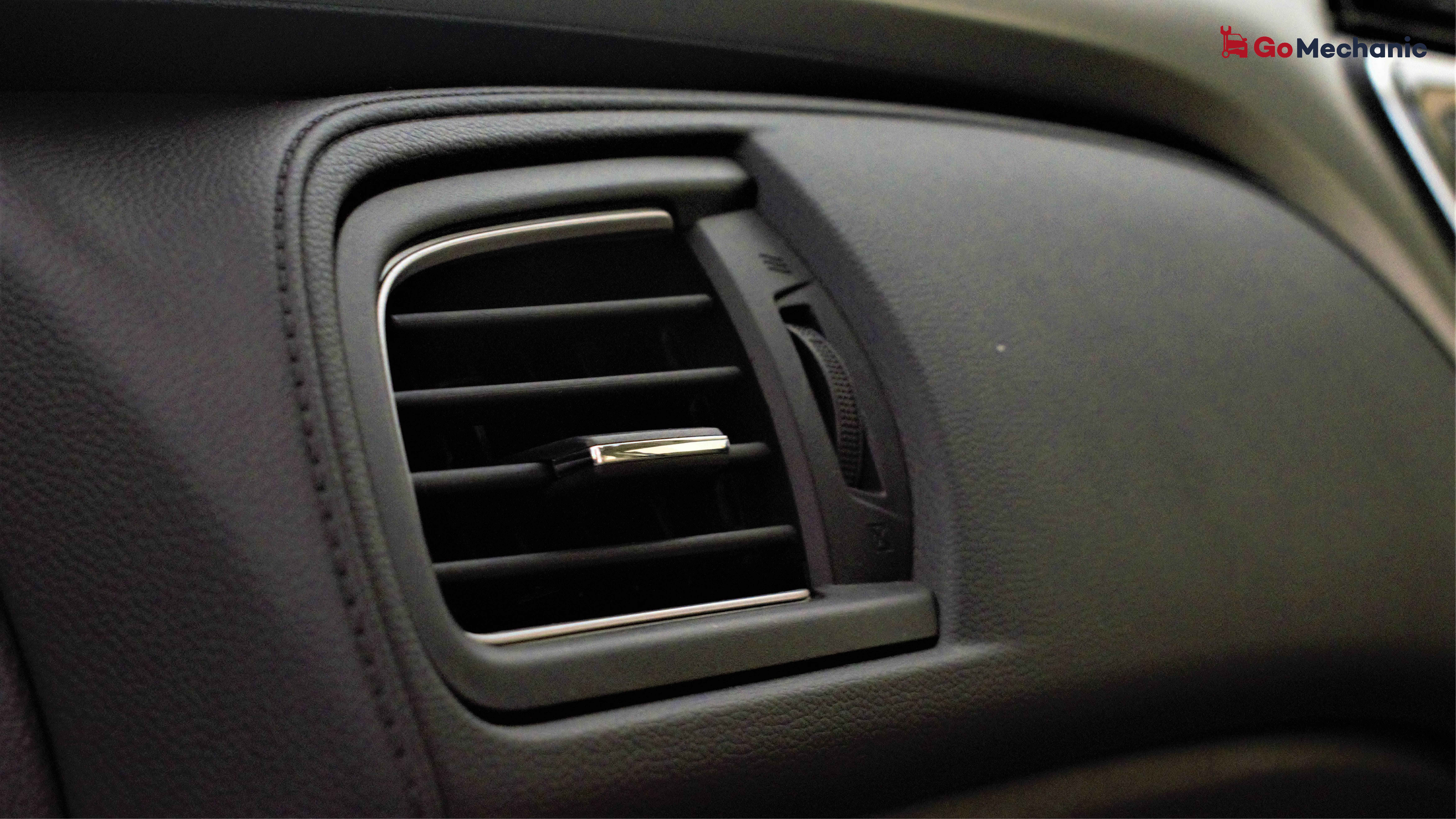

Articles
How to Deal With Loud Fan Noise When the Car AC Is On
Modified: October 18, 2024
Discover helpful articles on how to fix loud fan noise when your AC is on in your car. Get expert tips and solutions to solve this common issue today.
(Many of the links in this article redirect to a specific reviewed product. Your purchase of these products through affiliate links helps to generate commission for Storables.com, at no extra cost. Learn more)
Introduction
When you turn on your car’s air conditioning (AC) system, you expect to experience a cool and comfortable ride. However, if you notice a loud fan noise when the AC is turned on, it can be quite alarming and distracting. This noise can disrupt your driving experience and may indicate a potential issue with your car’s AC system. Understanding the common causes of loud fan noise can help you diagnose and address the problem effectively.
There are various reasons why your car’s AC fan may produce a loud noise. Faulty fan motors, loose or damaged fan blades, clogged air filters, high pressure in the AC system, and a malfunctioning AC compressor are some common culprits behind this issue.
A faulty fan motor can generate a loud noise when it is not functioning properly or when the bearings within the motor have worn out over time. Loose or damaged fan blades can also cause a buzzing or rattling sound as they spin. Clogged air filters restrict airflow, causing the fan to work harder and create more noise. High pressure in the AC system can result in a loud hissing or banging noise, indicating a potential refrigerant leak or other issues. Finally, a malfunctioning AC compressor can cause the fan to produce unusual sounds as it struggles to maintain the proper cooling function.
Identifying the source of the noise is the first step in diagnosing and fixing the issue. Carefully listening to the noise and observing any associated symptoms can help you narrow down the potential causes. It is essential to address the problem promptly to prevent further damage to your car’s AC system and ensure a more comfortable driving experience.
In the following sections, we will delve into each potential cause of loud fan noise when the AC is on, discuss how to identify the source of the noise, and provide solutions for diagnosing and fixing the issue. By the end of this article, you will have a better understanding of what may be causing the loud fan noise in your car and how to resolve it effectively.
Key Takeaways:
- Regular maintenance, such as cleaning or replacing air filters, can reduce loud fan noise in your car’s AC system, ensuring a quieter and more comfortable driving experience.
- Identifying and addressing specific issues, such as faulty fan motors or high AC system pressure, can effectively eliminate loud fan noise, restoring optimal cooling performance.
Read more: Car Making Noise When AC Is On
Common Causes of Loud Fan Noise
When it comes to the loud fan noise when the AC is on in your car, there are several common causes that you need to be aware of. Understanding these causes will help you diagnose and address the issue accurately. Let’s take a closer look at each potential cause:
- Faulty Fan Motor: One of the primary culprits behind loud fan noise is a faulty fan motor. This can occur when the motor is worn out or not working correctly. As a result, the fan may become unbalanced and produce a loud rattling or buzzing sound. In some cases, the fan may not spin at all, causing minimal or no airflow.
- Loose or Damaged Fan Blades: Another common cause of loud fan noise is loose or damaged fan blades. Over time, the blades may become loose or warped, leading to vibrations and noise when the fan is in operation. It’s essential to inspect the fan blades for any signs of damage, such as cracks or breaks, and tighten or replace them if necessary.
- Clogged Air Filters: A clogged or dirty air filter can also contribute to a loud fan noise. When the air filter becomes clogged with debris or dust, it restricts the airflow and makes the fan work harder to push air through. This increased workload can result in a louder operating noise. Regularly cleaning or replacing the air filters is crucial to maintaining proper airflow and reducing fan noise.
- High Pressure in the AC System: Excessive pressure within the AC system can lead to loud noises. This usually occurs when there is a refrigerant leak or a problem with the pressure relief valve. The loud noises can range from hissing sounds to banging or popping noises. If you suspect high pressure as the cause, it’s best to have a professional inspect and repair the AC system.
- Malfunctioning AC Compressor: The AC compressor is responsible for compressing and circulating refrigerant throughout the system. If the compressor is malfunctioning, it may start making unusual noises, such as grinding or squealing sounds. A faulty compressor can also cause the fan to vibrate excessively, resulting in loud noise.
These are the most common causes of loud fan noise when the AC is on in your car. Identifying the source of the noise is vital to address the issue effectively. In the next section, we will discuss how to identify the source of the noise and diagnose the problem accurately.
Faulty Fan Motor
A faulty fan motor is one of the primary causes of loud fan noise when the AC is on in your car. The fan motor plays a crucial role in circulating air through the AC system and providing a cool and comfortable environment inside your vehicle. When the fan motor is not functioning properly, it can result in loud and disruptive noises. Here are some factors that can contribute to a faulty fan motor:
- Worn Out Bearings: Over time, the bearings within the fan motor can wear out. This can cause the fan to become unbalanced, leading to loud rattling or buzzing noises. The worn-out bearings may also cause the fan to spin unevenly or not spin at all, resulting in inadequate airflow and reduced cooling performance.
- Electrical Issues: Electrical problems can also contribute to a faulty fan motor. Loose or corroded electrical connections can disrupt the flow of electricity to the motor, causing it to malfunction. In some cases, the motor may not receive the proper voltage or current, leading to noisy operation.
- Motor Overheating: Another factor that can lead to a faulty fan motor is overheating. If the motor becomes excessively hot, it can cause the internal components to expand and warp. This can result in increased friction and noise when the fan is in operation. Overheating can occur due to various reasons, such as a lack of proper lubrication or blocked ventilation around the motor.
Diagnosing a faulty fan motor requires careful observation and attention to detail. Start by listening to the noise produced by the fan carefully. If you hear a loud rattling or buzzing sound, it may indicate an issue with the fan motor. You can also visually inspect the motor for any signs of damage, such as visible wear or corrosion.
If you suspect a faulty fan motor, it is recommended to have it inspected and repaired by a professional. They can assess the extent of the damage and determine whether the motor needs to be repaired or replaced. In some cases, simple repairs such as tightening loose connections or lubricating the motor may solve the issue. However, if the motor is severely damaged or worn out, it may need to be replaced.
Addressing a faulty fan motor promptly is essential to prevent further damage to your car’s AC system and ensure efficient cooling. By resolving this issue, you can enjoy a quieter and more comfortable driving experience, even with the AC turned on.
Loose or Damaged Fan Blades
Loose or damaged fan blades can be another common cause of loud fan noise when the AC is on in your car. The fan blades play a crucial role in circulating air through the AC system and providing efficient cooling. If the fan blades are loose or damaged, they can create vibrations and generate excessive noise. Here are some factors that can contribute to loose or damaged fan blades:
- Normal Wear and Tear: Over time, fan blades can naturally experience wear and tear. The constant spinning and exposure to environmental factors can cause the fan blades to become loose or warped. This can result in vibrations and noise when the fan is in operation.
- Impact or External Damage: External factors such as accidents or impacts can damage the fan blades. A collision or hitting debris on the road can cause the blades to become bent, cracked, or misaligned. This can disrupt the balance of the fan and lead to loud noises during operation.
- Poor Maintenance: Inadequate maintenance can also contribute to loose or damaged fan blades. Neglecting to clean the fan and remove debris can cause the blades to accumulate dirt and grime. This buildup can affect the balance and performance of the fan, resulting in noise.
Identifying loose or damaged fan blades is relatively straightforward. If you hear a rattling or buzzing sound coming from the AC system when it is turned on, it could indicate an issue with the fan blades. You can visually inspect the blades for any signs of damage, such as cracks, bends, or misalignment.
Fixing loose or damaged fan blades may involve tightening or replacing them, depending on the severity of the issue. Tightening loose blades can be done by carefully adjusting the mounting screws or bolts that secure the blades in place. However, if the blades are significantly damaged or misaligned, they may need to be replaced entirely to restore proper functioning.
If you are not confident in performing these repairs yourself, it is advisable to seek assistance from a professional. They have the expertise and tools to safely and accurately fix loose or damaged fan blades. They can also provide recommendations on proper maintenance techniques to prevent future issues.
Addressing the issue of loose or damaged fan blades will not only reduce noise but also improve the efficiency of your car’s AC system. Properly functioning fan blades will ensure optimal air circulation and cooling performance, enhancing your overall driving experience.
Clogged Air Filters
Clogged air filters can be a significant cause of loud fan noise when the AC is on in your car. The air filters play a crucial role in maintaining the quality of airflow in your car’s AC system. Over time, these filters can become clogged with dirt, dust, pollen, and other debris, impeding the proper circulation of air. This restriction in airflow forces the fan to work harder, resulting in increased noise. Here are some key factors related to clogged air filters:
- Inadequate Maintenance: Neglecting regular maintenance and failing to clean or replace the air filters can lead to clogging. Over time, the filters accumulate debris and become highly obstructed, restricting the airflow and causing the fan to work excessively.
- Environmental Factors: Driving in areas with high levels of dust, pollen, or other pollutants can accelerate the clogging process. These external factors contribute to faster accumulation of debris on the air filters, reducing their effectiveness and creating a noisier operation.
- Decreased Cooling Performance: Clogged air filters not only affect the noise level but also impact the overall cooling performance of your car’s AC system. The reduced airflow caused by clogged filters hampers the system’s ability to efficiently cool the air, resulting in longer cooling times and less effective temperature control.
Diagnosing clogged air filters is relatively simple. If you notice reduced airflow from your car’s vents or a decrease in cooling performance, there is a high chance that the air filters are clogged. Additionally, if you hear a loud whooshing sound when the fan is on, it may indicate that the fan is working harder due to restricted airflow caused by the clogged filters.
To address the issue of clogged air filters, it is recommended to clean or replace the filters regularly. Cleaning involves gently removing the filters and using compressed air or a soft brush to remove any accumulated debris. If the filters are extensively clogged or damaged, it may be necessary to replace them entirely.
It is also essential to follow the manufacturer’s recommendations regarding the frequency of air filter cleaning or replacement. Generally, it is advisable to clean or replace the filters every 10,000 to 15,000 miles or once a year, depending on driving conditions and environmental factors.
By maintaining clean and unclogged air filters, you can enjoy a quieter and more efficient performance from your car’s AC system. Adequate airflow ensures optimal cooling performance, enhancing your overall driving experience.
Read more: Car AC Makes Hissing Noise When Turned On
High Pressure in the AC System
One of the potential causes of loud fan noise when the AC is on in your car is high pressure in the AC system. The AC system relies on a specific pressure range to function properly and provide efficient cooling. When there is an excessive amount of pressure, it can lead to loud hissing, banging, or popping noises. Here are some factors that can contribute to high pressure in the AC system:
- Refrigerant Leak: A refrigerant leak is a common cause of high pressure in the AC system. When there is a leak, the refrigerant escapes, causing the pressure to rise. As the pressure builds up, it can create loud hissing noises. It is important to have any refrigerant leaks identified and repaired by a professional to prevent further damage to the AC system.
- Failed Pressure Relief Valve: The pressure relief valve is designed to release excess pressure from the AC system. If the valve fails to function properly, it can result in a buildup of pressure. This increased pressure can cause loud banging or popping noises as the system tries to manage the excess pressure. A faulty pressure relief valve should be replaced to restore normal pressure levels.
- Obstructed Airflow: Restricted airflow within the AC system can also contribute to high pressure. This can occur due to factors such as a clogged condenser or blocked air vents. When the airflow is hindered, the AC system’s ability to dissipate heat and maintain optimal pressure is compromised, resulting in increased noise and potential damage to the system.
Identifying high pressure in the AC system requires careful observation and attention to associated symptoms. If you hear loud hissing, banging, or popping noises when the AC is on, it may indicate a high-pressure issue. Additionally, if you notice a decrease in cooling performance or irregular operation of the AC system, high pressure could be the underlying cause.
Addressing high pressure in the AC system is crucial to prevent further damage and ensure proper cooling performance. It is recommended to have a professional inspect and diagnose the issue. They can identify the specific cause of the high pressure and perform the necessary repairs.
Repairing high pressure in the AC system may involve fixing refrigerant leaks, replacing a faulty pressure relief valve, or resolving any airflow obstructions. A professional technician will be able to assess the situation accurately and recommend the appropriate course of action.
By addressing high pressure in the AC system, you can restore proper functionality to your car’s AC system, reduce noise levels, and enjoy a more comfortable driving experience.
Malfunctioning AC Compressor
A malfunctioning AC compressor is another potential cause of loud fan noise when the AC is on in your car. The AC compressor is responsible for compressing and circulating the refrigerant throughout the AC system. When the compressor is not functioning properly, it can produce unusual noises and affect the overall performance of the AC system. Here are some factors that can contribute to a malfunctioning AC compressor:
- Worn Clutch: The AC compressor is equipped with a clutch that engages and disengages the compressor as needed. Over time, the clutch can wear out, resulting in irregular engagement or disengagement. This can cause the compressor to produce grinding or squealing noises, indicating a malfunctioning clutch.
- Internal Component Failure: Various internal components within the AC compressor can fail, leading to loud and unusual noises. Failed bearings, pistons, or valves can result in grinding, rattling, or banging sounds. These noises typically indicate significant damage or wear within the compressor and usually require professional intervention.
- Insufficient Lubrication: The AC compressor relies on proper lubrication to ensure smooth operation. If there is insufficient lubrication or the compressor oil becomes contaminated, it can lead to increased friction and noise. This lack of lubrication can occur due to leaks, inadequate maintenance, or a malfunctioning lubrication system within the compressor.
Identifying a malfunctioning AC compressor requires attentiveness to the specific noises it produces. If you hear grinding, squealing, or banging sounds coming from the AC system, it is likely indicative of a compressor issue. Additionally, if the AC system fails to cool properly or exhibits irregular cooling patterns, a malfunctioning compressor may be the underlying cause.
Addressing a malfunctioning AC compressor typically requires the assistance of a professional technician. They have the expertise and tools to diagnose the specific problem and recommend the appropriate solution. In some cases, the compressor may need to be replaced if the damage is extensive or irreparable.
It is essential to address a malfunctioning AC compressor promptly to prevent further damage to the AC system and ensure optimal cooling performance. Ignoring compressor issues can lead to more severe complications and potentially costly repairs.
By resolving a malfunctioning AC compressor, you can eliminate the loud fan noise, restore proper AC operation, and enjoy a comfortable and quiet driving experience.
Identifying the Source of the Noise
When you encounter a loud fan noise when the AC is on in your car, it is important to identify the source of the noise to accurately diagnose the problem. Here are some steps you can follow to help pinpoint the source of the noise:
- Listen Carefully: Start by listening attentively to the noise produced by the fan when the AC is on. Pay attention to the characteristics of the sound, such as its intensity, frequency, and duration. This can provide valuable clues about the source of the noise.
- Note Any Associated Symptoms: Observe any additional symptoms that may accompany the noise. This could include reduced cooling performance, irregular fan operation, or strange odors. These symptoms can help narrow down the potential causes of the noise.
- Inspect Fan Motor and Blades: Visually inspect the fan motor and blades for any signs of damage or wear. Look for loose connections, rust, cracks, or misalignment. If you notice any abnormalities, it may indicate the source of the noise.
- Clean or Replace Air Filters: Check the air filters for clogging or excessive dirt accumulation. If the filters are clogged, it can affect the airflow and put additional strain on the fan, resulting in increased noise. Cleaning or replacing the filters can sometimes resolve the issue.
- Check AC System Pressure: Use appropriate tools to measure the pressure in the AC system. High pressure can cause various noises, such as hissing or banging sounds. If the pressure is too high, it may indicate a refrigerant leak or other issues within the AC system.
- Examine the AC Compressor: Inspect the AC compressor for any visible damage or leaks. Look for oil stains or refrigerant leakage, as this can indicate a malfunctioning compressor. If the compressor is making unusual noises, it may need to be repaired or replaced.
By following these steps, you can narrow down the potential causes and identify the source of the loud fan noise when the AC is on in your car. However, if you are unsure about diagnosing the issue yourself, it is recommended to seek assistance from a professional technician. They have the skills, experience, and diagnostic tools to accurately identify the problem and provide the necessary repairs.
Remember that addressing the source of the noise promptly is crucial to prevent further damage and ensure optimal performance of your car’s AC system. By diagnosing the issue correctly, you can take the necessary steps to resolve the noise and enjoy a comfortable and quiet driving experience.
Check the fan and the AC system for any debris or obstructions that may be causing the loud noise. It could be a simple fix like cleaning out the fan or replacing a worn-out component.
Diagnosing and Fixing the Issue
Diagnosing and fixing the loud fan noise when the AC is on in your car requires a systematic approach to identify the underlying problem accurately. Here is a step-by-step process to help you diagnose and address the issue:
- Identify the Noise: Listen carefully to the noise and note its characteristics. Is it a buzzing, rattling, grinding, or squealing sound? Identifying the specific noise can provide valuable clues about the source of the problem.
- Check Fan Motor and Blades: Inspect the fan motor and blades for any signs of damage, wear, or loose connections. Ensure that the fan blades are properly aligned. Tighten any loose connections or consider replacing the motor if necessary.
- Clean or Replace Air Filters: Clean or replace the air filters to ensure proper airflow. Clogged filters can put strain on the fan and cause increased noise. Regular maintenance of air filters is crucial to prevent clogging and optimize the performance of the AC system.
- Check AC System Pressure: Measure the pressure in the AC system using appropriate tools. High pressure can indicate refrigerant leaks or other issues. If the pressure is too high, it may require professional assistance to address the problem effectively.
- Inspect the AC Compressor: Examine the AC compressor for any visible damage or leaks. Look for oil stains or refrigerant leakage. A malfunctioning compressor may need repair or replacement to resolve the issue and prevent further damage to the system.
- Seek Professional Help: If you are unable to identify the source of the noise or if the problem persists after following the above steps, it is advisable to seek assistance from a professional technician. They have the expertise, diagnostic tools, and experience to diagnose the problem accurately and provide the necessary repairs.
Fixing the issue will depend on the specific cause identified during the diagnosis. Here are some potential solutions for common problems:
- If the fan motor is faulty, it may need to be cleaned or replaced.
- Loose or damaged fan blades may require tightening or replacement.
- Clogged air filters should be cleaned or replaced regularly to ensure proper airflow.
- If high pressure is the issue, professional inspection and repair of the AC system may be required.
- A malfunctioning AC compressor may need repair or replacement to restore proper function and reduce noise.
It is important to address the issue promptly to prevent further damage to your car’s AC system and ensure a quieter and more comfortable driving experience.
Remember, if you are not confident in performing the repairs yourself or if the issue persists, it is always best to seek professional help. They have the knowledge and skills to diagnose and fix the problem effectively, restoring optimal cooling performance and reducing noise levels.
Read more: AC Clicking Noise When Turned On
Cleaning or Replacing the Fan Motor
If the loud fan noise when the AC is on in your car is due to a faulty fan motor, cleaning or replacing the motor may be the solution. Here’s a step-by-step guide on how to clean or replace the fan motor:
- Disconnect the Power: Before working on the fan motor, ensure the engine is turned off and disconnect the battery to prevent any electrical accidents.
- Access the Fan Motor: Locate the fan motor, which is usually positioned behind the radiator. In some cars, you may need to remove the radiator shroud or other components to access the motor.
- Clean the Fan Motor: If the fan motor is dirty or dusty, use a soft brush or compressed air to gently clean it. Remove any debris that may have accumulated on the motor or in the surrounding area. Be careful not to damage any electrical components during the cleaning process.
- Inspect the Fan Motor: While cleaning, inspect the fan motor for any signs of damage, such as worn-out bearings or loose connections. If you notice any significant damage or wear, it may be necessary to replace the motor.
- Tighten Loose Connections: If the fan motor has loose electrical connections, carefully tighten them using the appropriate tools. Ensure that all connections are secure to prevent any electrical issues or interrupted power supply.
- Replace the Fan Motor: If the fan motor is beyond repair or cleaning does not resolve the issue, it may be necessary to replace the motor entirely. Consult your car’s manual or seek professional assistance to obtain the correct replacement motor for your vehicle’s make and model.
- Installation of the New Motor: Install the new fan motor by following the manufacturer’s instructions. Ensure all electrical connections are properly connected and secure. Double-check that the motor is aligned correctly and functioning smoothly.
- Test the AC System: After cleaning or replacing the fan motor, reconnect the battery and start the engine. Turn on the AC system to check if the loud fan noise has been resolved. Monitor the noise and observe any changes in cooling performance.
It is important to exercise caution and always follow proper safety procedures when working on the fan motor. If you are not confident in performing these tasks, consult a professional technician who can safely clean or replace the fan motor for you.
By cleaning or replacing the fan motor, you can eliminate the loud noise and ensure a smooth and quieter operation of your car’s AC system. It will enhance your driving experience, providing you with efficient cooling and a more comfortable ride.
Repairing or Replacing Fan Blades
If the loud fan noise when the AC is on in your car is due to loose or damaged fan blades, repairing or replacing the blades may be necessary. Here’s a step-by-step guide on how to repair or replace fan blades:
- Disconnect the Power: Before working on the fan blades, ensure the engine is turned off and disconnect the battery to prevent any electrical accidents.
- Access the Fan Blades: Locate the fan blades, which are typically positioned behind the radiator or inside the AC system housing. Depending on your vehicle, you may need to remove the radiator shroud, AC system housing, or other components to access the blades.
- Inspect the Fan Blades: Carefully examine the fan blades for any signs of damage, such as cracks, bends, or misalignment. If the blades are just slightly misaligned, you may be able to realign them without the need for replacement.
- Tighten Loose Blades: If the fan blades are loose, gently tighten the mounting screws or bolts that secure them in place. Ensure that each blade is tightened evenly to maintain balance and reduce noise.
- Repair Bent Blades: If the fan blades are bent, you can attempt to repair them. Gently use pliers or a similar tool to carefully straighten the blades, taking care not to exert too much force and risk further damage. Check the balance of the blades after straightening them to ensure optimal operation.
- Replace Damaged Blades: If the fan blades are severely damaged or cannot be repaired, you will need to replace them. Consult your car’s manual or seek professional assistance to obtain the correct replacement fan blades for your vehicle’s make and model.
- Installation of New Blades: Install the new fan blades by following the manufacturer’s instructions. Ensure that each blade is aligned properly and securely attached to the motor. Pay attention to the tightening torque specifications to avoid over-tightening or under-tightening.
- Test the AC System: After repairing or replacing the fan blades, reconnect the battery and start the engine. Turn on the AC system to check if the loud fan noise has been eliminated. Monitor the noise and observe any changes in cooling performance.
It is important to exercise caution and follow proper safety procedures when working with fan blades. If you are unsure about repairing or replacing the blades yourself, it is recommended to seek assistance from a professional technician.
By repairing or replacing the fan blades, you can eliminate the loud noise and ensure the smooth and proper operation of your car’s AC system. It will enhance the cooling performance and provide you with a quieter and more comfortable driving experience.
Cleaning or Replacing Air Filters
If the loud fan noise when the AC is on in your car is due to clogged air filters, cleaning or replacing the filters can help resolve the issue. Here’s a step-by-step guide on how to clean or replace the air filters:
- Locate the Air Filters: Find the air filter housing in your car’s AC system. It is usually located near the front of the vehicle, behind the glove box, or under the hood. Refer to your vehicle’s manual if you’re unsure of the exact location.
- Remove the Air Filter Housing: Open or remove the cover of the air filter housing. Some vehicles may have clips or screws that need to be loosened or undone. Take note of the orientation of the old filter before removing it.
- Inspect the Air Filters: Check the condition of the air filters. If the filters are heavily clogged with dirt, dust, or debris, they may need to be replaced. If they are only moderately dirty, cleaning them might be sufficient.
- Clean the Air Filters: If the filters are reusable, clean them by gently tapping and shaking them to remove loose debris. Avoid brushing or combing the filters, as this may damage the delicate filter material. You can also use compressed air or a vacuum cleaner to remove any remaining dirt or dust.
- Replace the Air Filters: If the filters are too dirty or damaged to be effectively cleaned, replace them with new ones. Ensure that you use the correct type and size of filters recommended for your vehicle’s make and model.
- Reinstall the Air Filter Housing: Place the cleaned or new filters back into the housing, following the proper orientation. Ensure a secure fit and reattach the cover, tightening any clips or screws that were undone earlier.
- Test the AC System: Reconnect the battery and start the engine. Turn on the AC system to check if the loud fan noise has been eliminated. Monitor the noise and observe any changes in cooling performance.
Regularly cleaning or replacing the air filters is essential to maintain optimal airflow and prevent clogging. It is recommended to clean or replace the filters every 10,000 to 15,000 miles or once a year, depending on driving conditions and environmental factors.
If you are unsure about cleaning or replacing the air filters yourself, consult a professional technician who can safely perform the task for you. They can also provide recommendations on proper maintenance techniques to ensure the long-term efficiency of your car’s AC system.
By keeping the air filters clean or replacing them when necessary, you can improve the airflow, reduce fan noise, and enhance the overall performance of your car’s AC system, resulting in a more comfortable and quiet driving experience.
Checking AC System Pressure
To diagnose the cause of the loud fan noise when the AC is on in your car, checking the AC system pressure is an important step. Here’s a guide on how to check the AC system pressure:
- Gather the Required Tools: To check the AC system pressure, you’ll need an AC manifold gauge set, which consists of a pressure gauge, hoses, and connectors. Ensure that you have a set that is compatible with your vehicle’s AC system.
- Locate the Service Ports: Identify the service ports on the AC system. These ports are usually located on the high-pressure and low-pressure sides of the AC system. Consult your vehicle’s manual or seek professional advice if you’re unsure about the precise location of these ports.
- Connect the Gauge Set: Connect the high-pressure hose of the gauge set to the high-pressure service port and the low-pressure hose to the low-pressure service port. Ensure a secure connection to prevent any refrigerant leaks.
- Switch on the AC System: Start the vehicle’s engine and switch on the AC system to activate the compressor. Set the AC controls to the maximum cooling level and the fan speed to the highest setting.
- Read the Pressure Gauges: Observe the readings on the pressure gauges. The low-pressure side (suction side) should typically range between 25 to 45 psi (pounds per square inch), while the high-pressure side (discharge side) should be between 200 to 350 psi, depending on the ambient temperature. Refer to your vehicle’s manual for the recommended pressure range specific to your car.
- Interpret the Readings: Compare the gauge readings to the recommended pressure range. If the pressure readings are significantly higher or lower than the specified range, it may indicate a problem. High pressure could be due to a refrigerant overcharge, obstruction in the system, or a faulty pressure relief valve. Low pressure may be caused by a refrigerant leak, a malfunctioning compressor, or a restricted expansion valve.
- Seek Professional Assistance: If the pressure readings are outside the recommended range or if you are unsure about interpreting the readings, it is advisable to consult a professional technician. They have the expertise and diagnostic tools to accurately assess the AC system and perform necessary repairs.
Checking the AC system pressure provides insights into the health and functioning of the system. It can help identify issues such as refrigerant leaks, excessive or insufficient pressure, or faulty components. By understanding and addressing these problems, you can effectively resolve the loud fan noise and restore optimal cooling performance in your car.
Remember, working with AC systems requires proper knowledge and precautions. If you are not confident in performing the pressure check yourself, it is best to seek assistance from a qualified technician who can accurately diagnose the AC system and recommend the appropriate solutions.
Read more: Lg Washer Making Loud Noise When Spinning
Repairing or Replacing the AC Compressor
If the loud fan noise when the AC is on in your car is caused by a malfunctioning AC compressor, repairing or replacing the compressor may be necessary. Here’s a step-by-step guide on how to repair or replace the AC compressor:
- Consult a Professional: It is recommended to consult a professional technician to diagnose the AC compressor and confirm if it needs repair or replacement. They have the expertise and diagnostic tools to accurately assess the condition of the compressor.
- Recover Refrigerant: If the compressor needs to be replaced, the refrigerant in the AC system needs to be properly recovered before proceeding. This step helps prevent unnecessary leaks and environmental damage.
- Remove Serpentine Belt: Disconnect the negative battery terminal and remove the serpentine belt that drives the AC compressor. Refer to your vehicle’s manual to locate the belt tensioner and use the appropriate tools to release tension and remove the belt.
- Remove Old Compressor: Remove the bolts or mounting brackets securing the AC compressor to the engine block. Carefully disconnect any electrical connections or refrigerant lines associated with the compressor. Keep track of the hardware and connections for reinstallation.
- Install New Compressor: Install the new AC compressor by following the manufacturer’s instructions and in reverse order of removal. Ensure that the new compressor is the correct model for your vehicle’s make and model.
- Reconnect Connections: Reconnect all electrical connections and refrigerant lines to the new compressor securely. Verify that the connections are snug but not over-tightened to avoid damage.
- Reinstall Serpentine Belt: Put the serpentine belt back on the appropriate pulleys, following the belt routing diagram provided in your vehicle’s manual. Apply proper tension to the belt using the tensioner and ensure it is correctly seated on all pulleys.
- Recharge AC System: If the compressor was replaced, the AC system will need to be recharged with the appropriate amount of refrigerant. It is essential to follow proper procedures and refrigerant specifications as per the manufacturer’s guidelines.
- Test the AC System: Once the AC system has been recharged, start the engine and turn on the AC system to check for proper operation. Monitor the system for any leaks or abnormal noises. Ensure that the cooling performance is back to normal and that the loud fan noise has been eliminated.
Repairing or replacing the AC compressor can be a complex task, and it is recommended to leave it to a professional technician who has the experience and tools to perform the job accurately. They can ensure that the new compressor is installed correctly and that the AC system functions optimally.
By repairing or replacing the AC compressor, you can eliminate the loud fan noise and restore proper cooling performance in your car. It will help provide a comfortable and enjoyable driving experience, especially during hot weather conditions.
Conclusion
Experiencing a loud fan noise when the AC is on in your car can be disruptive and annoying. However, by understanding the common causes of this issue and following the appropriate steps for diagnosis and repair, you can address the problem effectively and restore a quieter and more comfortable driving experience.
We discussed several potential causes of loud fan noise, including a faulty fan motor, loose or damaged fan blades, clogged air filters, high pressure in the AC system, and a malfunctioning AC compressor. Each of these factors can contribute to the noise and require specific solutions to rectify the problem.
Diagnosing the source of the noise is essential to accurately identify the underlying issue. By listening carefully to the noise, inspecting components, and observing associated symptoms, you can determine the cause and take the appropriate course of action.
Depending on the specific cause, potential solutions include cleaning or replacing the fan motor, repairing or replacing fan blades, cleaning or replacing air filters, checking AC system pressure, and repairing or replacing the AC compressor. For complex tasks or if you are unsure, it is always advisable to consult a professional technician who can provide expert guidance and perform the necessary repairs.
Regular maintenance and timely addressing of issues will help keep your car’s AC system in optimal condition. This includes cleaning or replacing air filters regularly, ensuring proper lubrication of components, and monitoring AC system pressure to detect any abnormalities early on.
In conclusion, a loud fan noise when the AC is on in your car can be resolved by understanding the underlying causes and implementing the appropriate repairs. By taking care of your car’s AC system, you can enjoy a quieter and more pleasant driving experience, even during the hottest of days. Remember to prioritize safety and seek professional assistance when needed to ensure the best results.
If tackling loud fan noise in your car's AC system has been a challenge, you'll find relief knowing more help is right around the corner. Once you've pinpointed and addressed the noise, ensuring your car AC operates smoothly might require professional attention. Whether needing minor adjustments or major repairs, finding reliable service is key. Don't miss our detailed guide on where to seek expert assistance for your vehicle's air conditioning needs, ensuring cool, quiet rides ahead.
Frequently Asked Questions about How To Deal With Loud Fan Noise When The Car AC Is On
Was this page helpful?
At Storables.com, we guarantee accurate and reliable information. Our content, validated by Expert Board Contributors, is crafted following stringent Editorial Policies. We're committed to providing you with well-researched, expert-backed insights for all your informational needs.
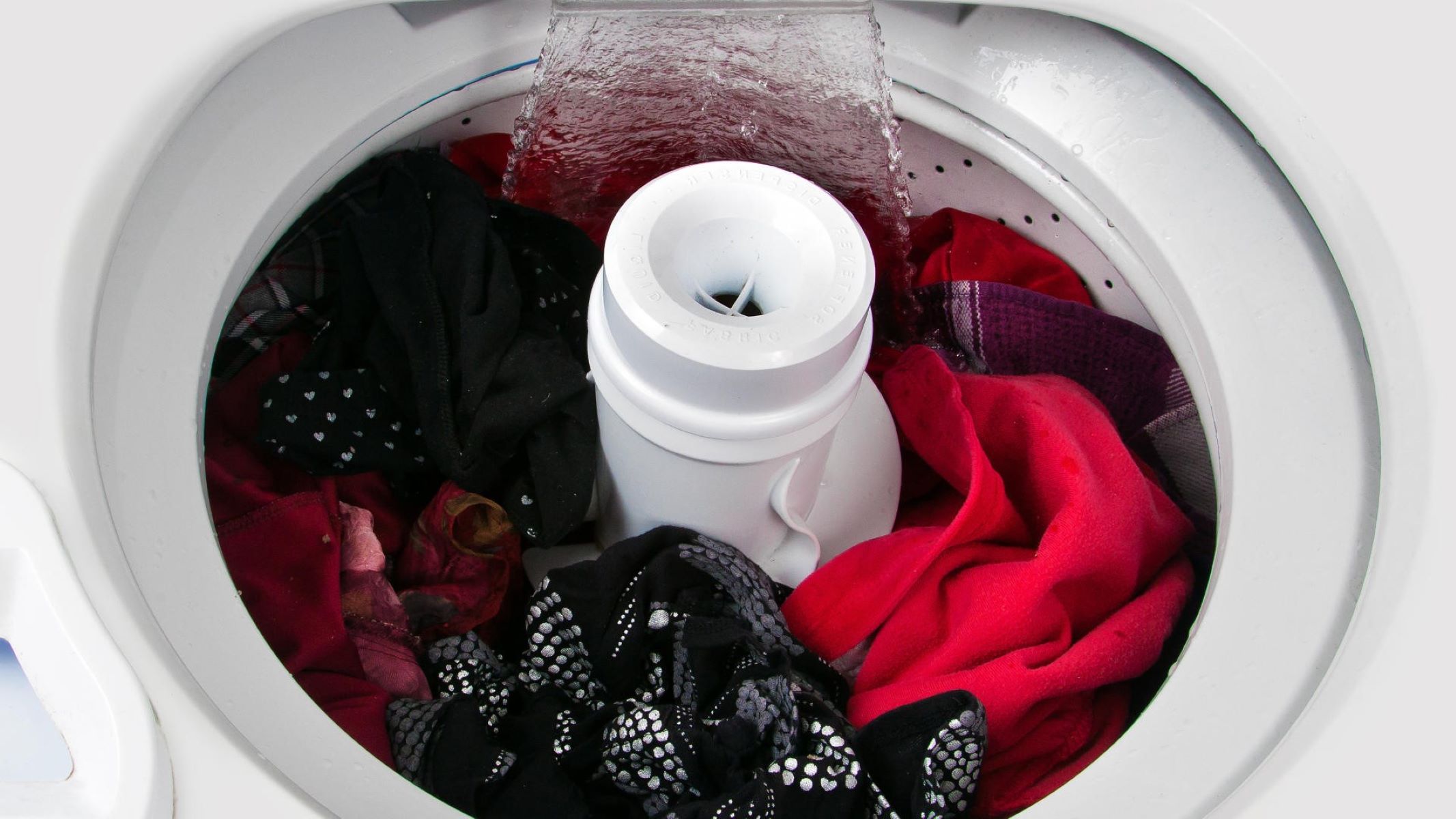
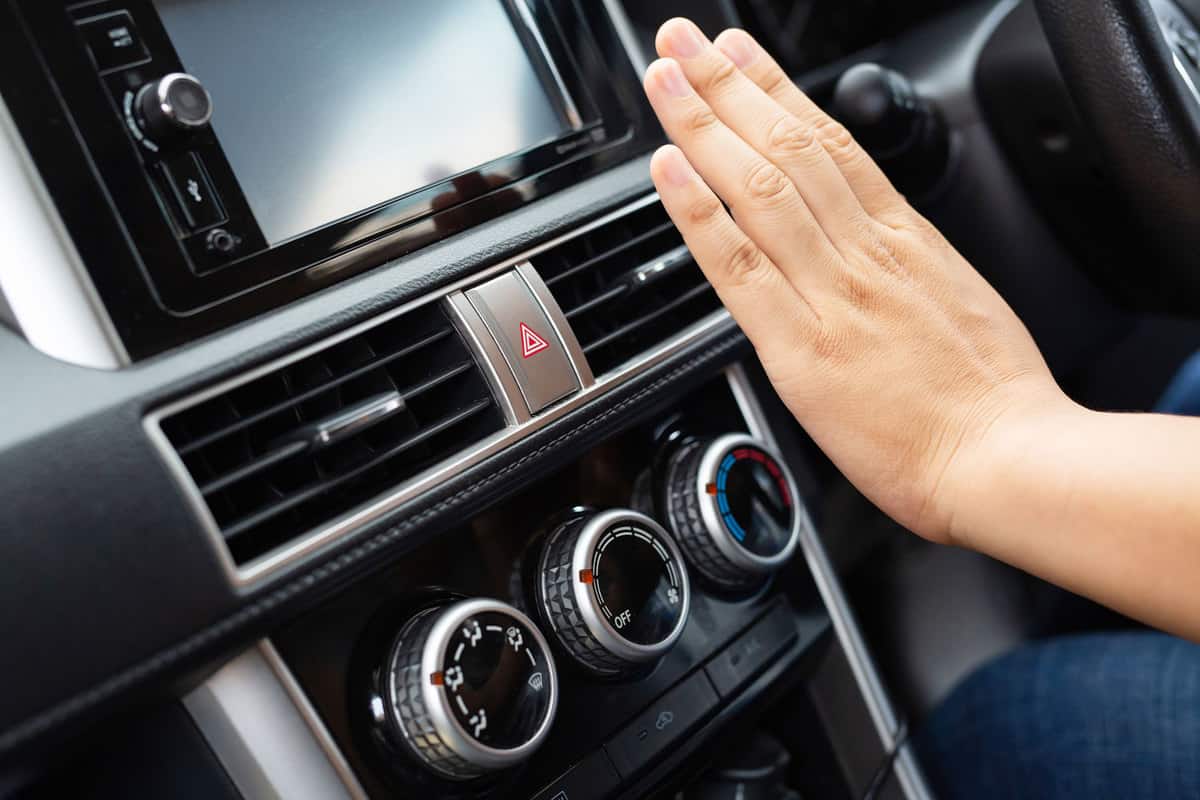

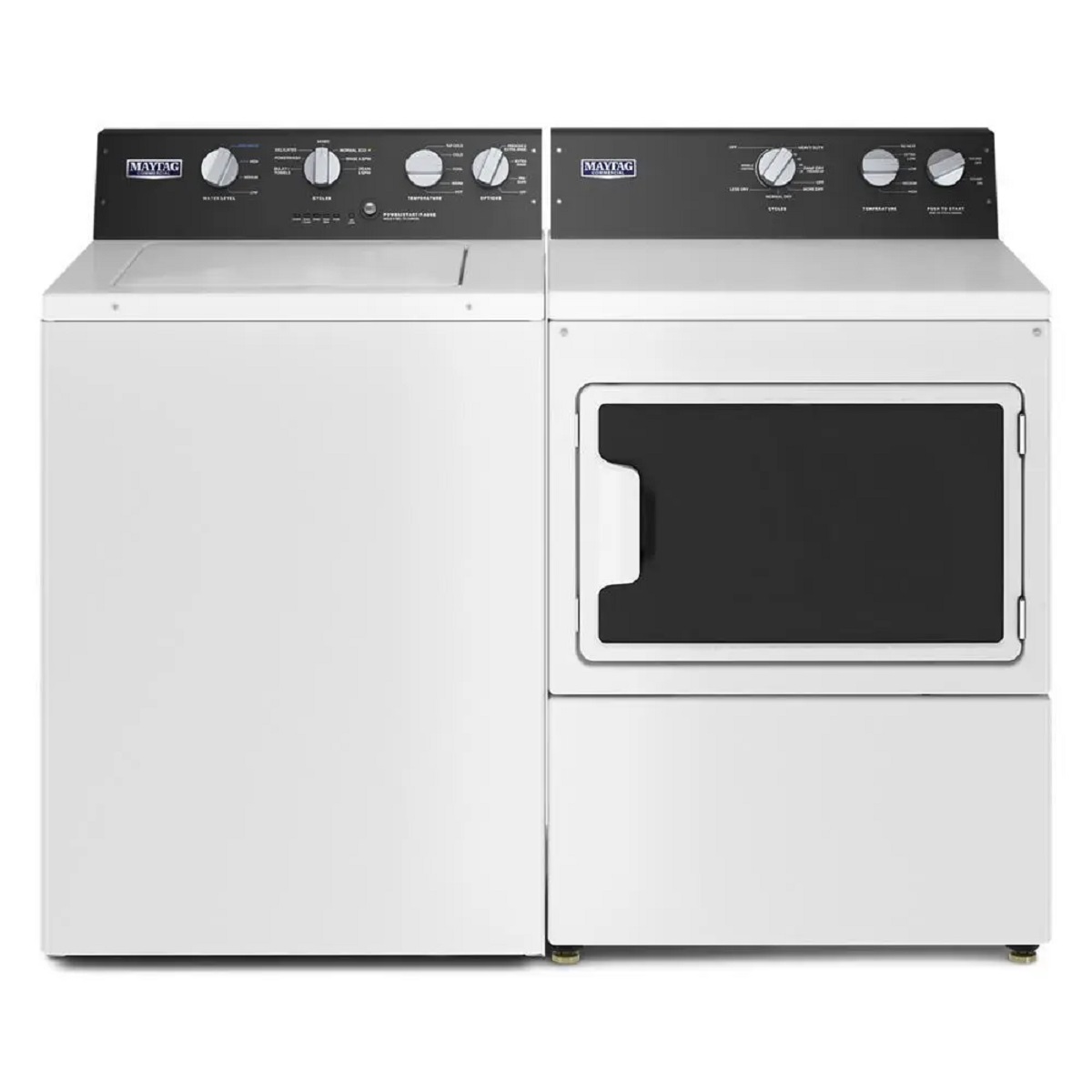

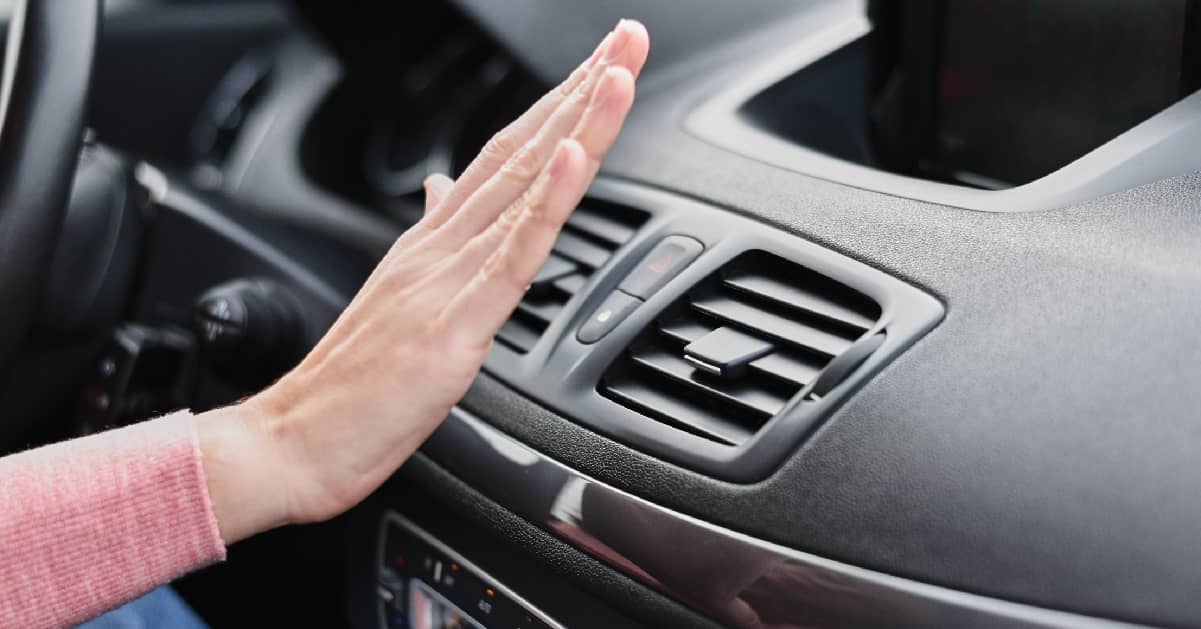







0 thoughts on “How to Deal With Loud Fan Noise When the Car AC Is On”